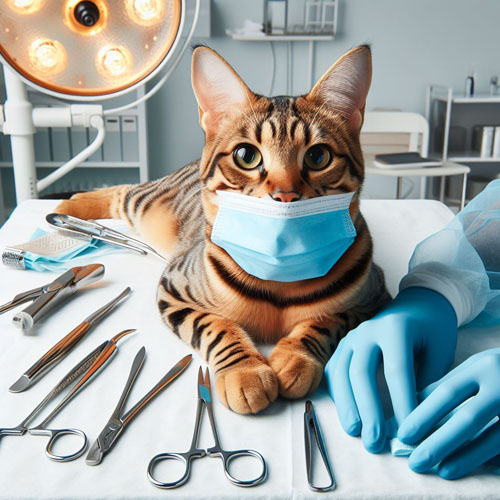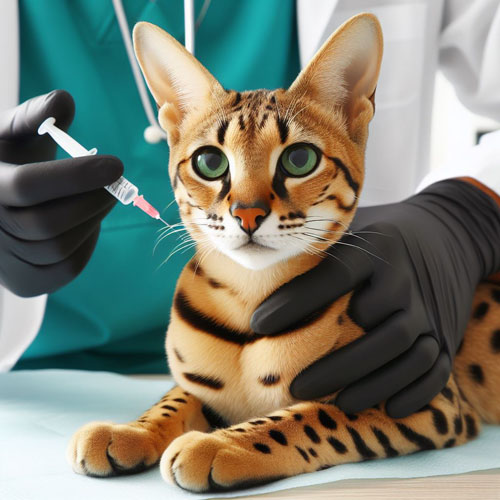Feline Hyperesthesia
Feline Hyperesthesia Syndrome (FHS), also known as “twitch-skin syndrome” or “rolling skin syndrome,” is a peculiar and poorly understood condition in cats. The syndrome is characterized by a range of unusual behaviors and physical symptoms. Cats affected by FHS may display the following signs:
- Rippling Skin: The cat may experience a rippling or rolling motion of the skin along the back.
- Sudden Burst of Activity: Cats with FHS may suddenly become hyperactive or engage in frenetic behavior.
- Tail Chasing: Some cats may exhibit repetitive behaviors like chasing their tails.
- Vocalization: Cats may vocalize, meow excessively, or exhibit signs of distress during episodes.
- Dilated Pupils: The cat’s pupils may become dilated.
- Frantic Grooming: Excessive self-grooming or aggressive grooming behavior may occur
The exact cause of Feline Hyperesthesia Syndrome is not well understood, but it is believed to involve neurological or behavioral factors. It is more commonly seen in young to middle-aged cats and may occur spontaneously.
Diagnosing FHS can be challenging, as there are no specific tests for the condition. Veterinarians typically rely on a thorough physical examination, ruling out other possible causes of the symptoms, and observing the cat’s behavior.
Treatment options may include:
- Environmental Management: Providing a calm and enriched environment for the cat.
- Medication: Anti-anxiety medications or drugs that affect neurotransmitters may be prescribed to manage symptoms.
- Behavioral Modification: Implementing behavior modification techniques to reduce stress and anxiety.
If you suspect that your cat is experiencing FHS, it is crucial to consult with a veterinarian for a proper diagnosis and tailored treatment plan. Each cat may respond differently to various interventions, and a veterinarian can help determine the most appropriate approach for your pet.





